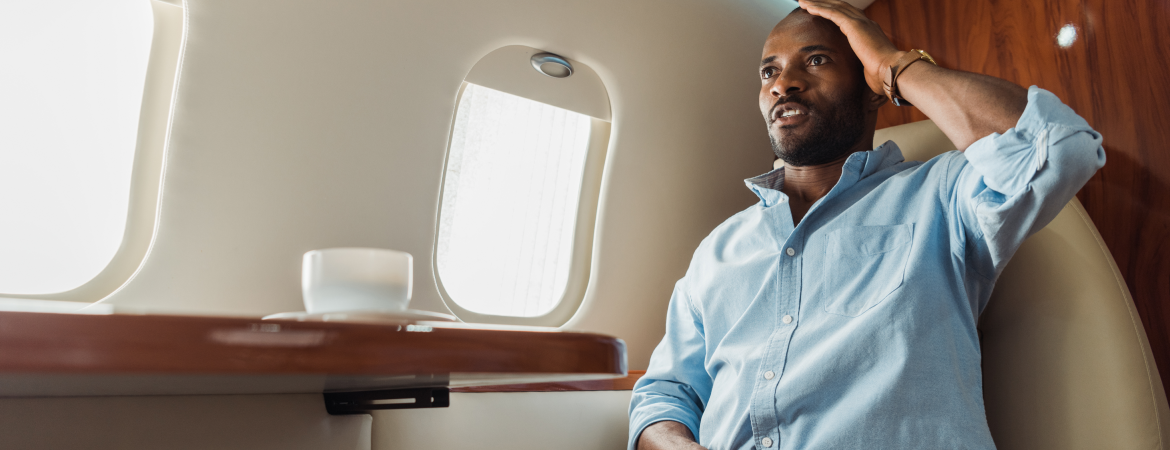
How to deal with flying anxiety
You’ve probably heard it before, but it’s true – millions of people are afraid of flying. You’re not alone.
A phobia is a strong fear that’s out of proportion to the threat. A flight phobia simply means that you may logically recognise that flying is safe, but you can't get rid of the fearful feeling. Fear of flying, or aerophobia, is an anxiety disorder.
According to research, people between the ages of 17 and 34 are most likely to suffer from aerophobia, but of course, many others can be affected. During these age periods, common life events like graduating from university, getting married, starting a new job or giving birth could all factor into your flying anxiety. People may be concerned that flying puts their lives in danger at such a critical time. Someone can fly for years without experiencing any anxiety before suddenly developing aerophobia.
But don't worry; we've got some ideas to help ease your anxiety.
Understand your fear
Some passengers may be concerned about crashing or being present during technical malfunctions and turbulence, while others worry about the claustrophobic feeling or germs in a confined area. There’s also such a thing as the fear of being fearful (the fear of developing a panic attack mid-flight). First, acknowledge what makes you scared. The first step toward conquering anxiety is to recognise it.
Talk to your flight attendants
It’s mandatory for flight attendants to keep up to date with regular training on safety procedures. So, that’s one thing you can tick off your worry list. Added to that, flight attendants are there for you; speak with one as you board the plane and let them know you’re anxious. Chances are they’ll pop by during the flight to check in and ensure you’re doing okay. The cabin crew is well trained, and you’re in safe hands.
Pick a seat that helps you avoid your trigger
Once you've determined what exactly you're afraid of when it comes to flying, use your seat selection to help you avoid triggers. If you're afraid of heights, stay away from the windows. If you're claustrophobic, be sure to pick an aisle seat for more leg room.
Find a distraction
Make flight mode work for you. Before the flight, download an absorbing movie, podcast, book or funny videos to your phone or laptop. Once you’re in the air, get lost in your entertainment and before you know it, you’ll be at your destination.
Desensitise yourself
Exposure therapy is about getting familiar with the source of your anxiety. Try this technique in the weeks or even a month before your flight: watch videos of planes taking off, in the air, and landing. There are thousands of YouTube videos that are created especially for nervous flyers and many of them include calming advice from pilots.
It may be time to see a therapist
If you’ve tried many self-soothing methods and still feel more anxious than ever, it’s worth looking into professional help. Through cognitive behavioural therapy, exposure and response prevention, a mental health professional can help you overcome your fear of flying. Anti-anxiety medication may also be prescribed, which may help you during your flight.
Takeaway
If you're still afraid of bumps and strange noises on your flight, do some research on common plane sounds. So, the next time you hear something strange, you'll know exactly what it is and can relax and enjoy your flight.
References:
- https://www.travelandleisure.com/travel-tips/getting-over-fear-of-flying
- https://adaa.org/living-with-anxiety/ask-and-learn/ask-expert/how-can-i-overcome-my-fear-of-flying
- https://www.webmd.com/anxiety-panic/features/what-do-anxious-about-flying
- https://my.clevelandclinic.org/health/diseases/22431-aerophobia-fear-of-flying
Disclaimer
This article is for informational purposes only. Always check with your doctor or medical practitioner about any health concerns, before embarking on any fitness or nutrition programme, and usage of any medication.
